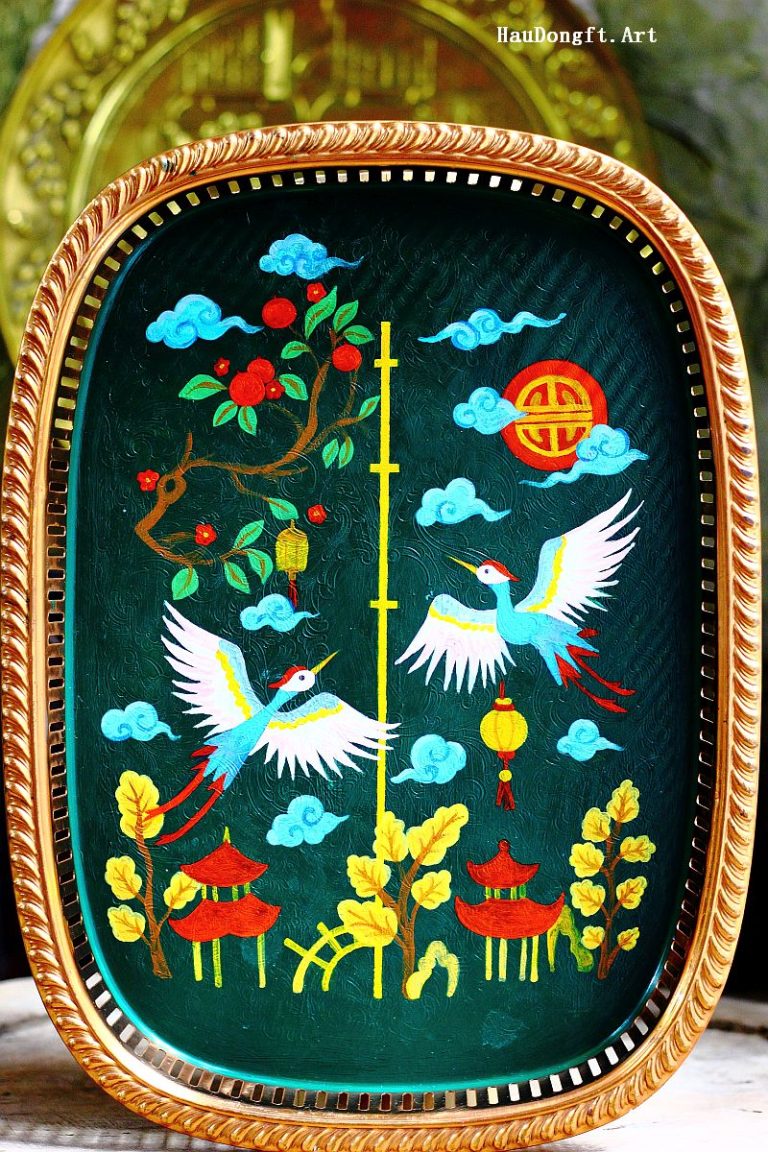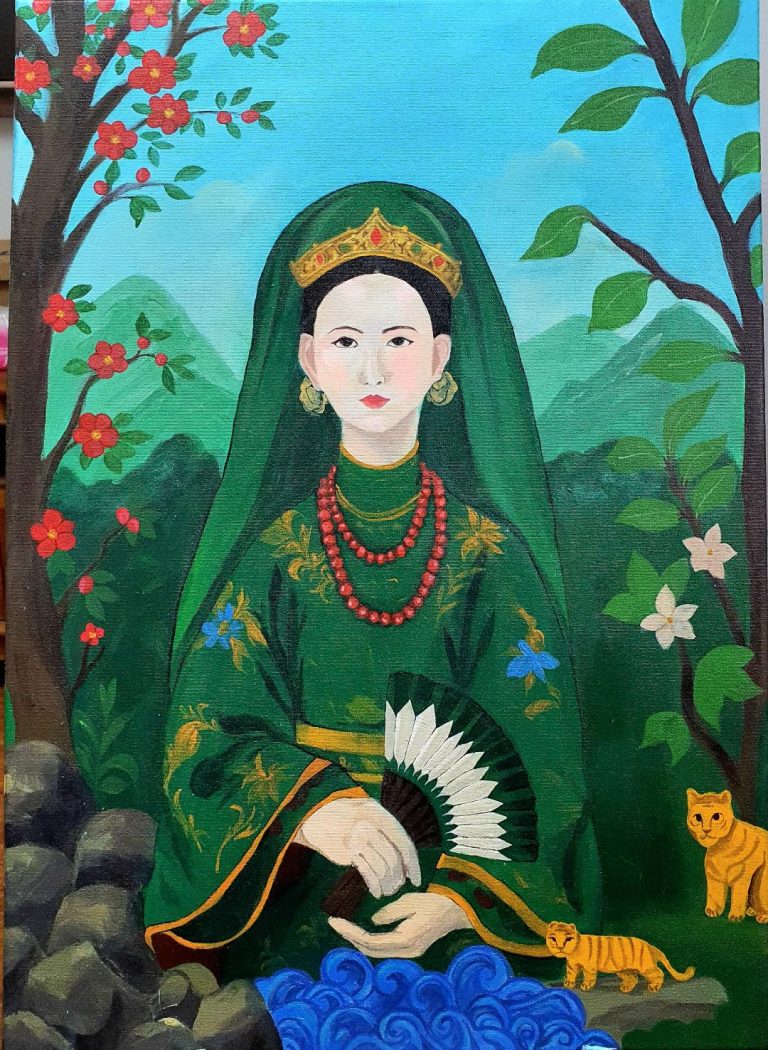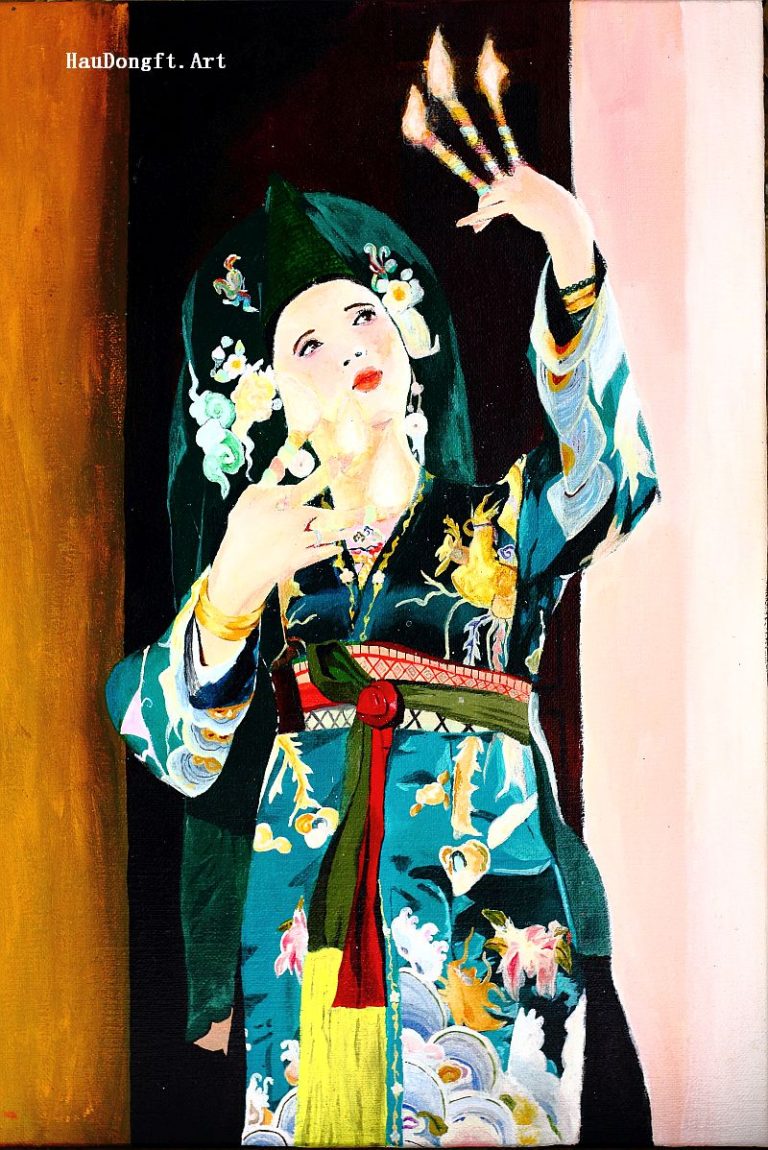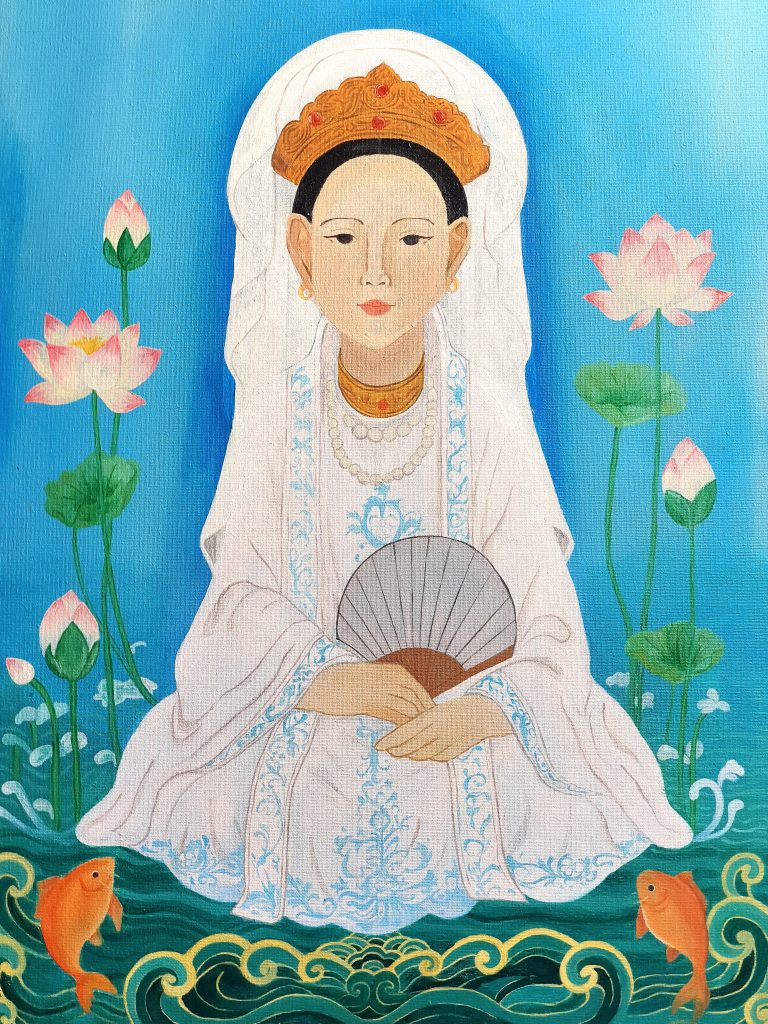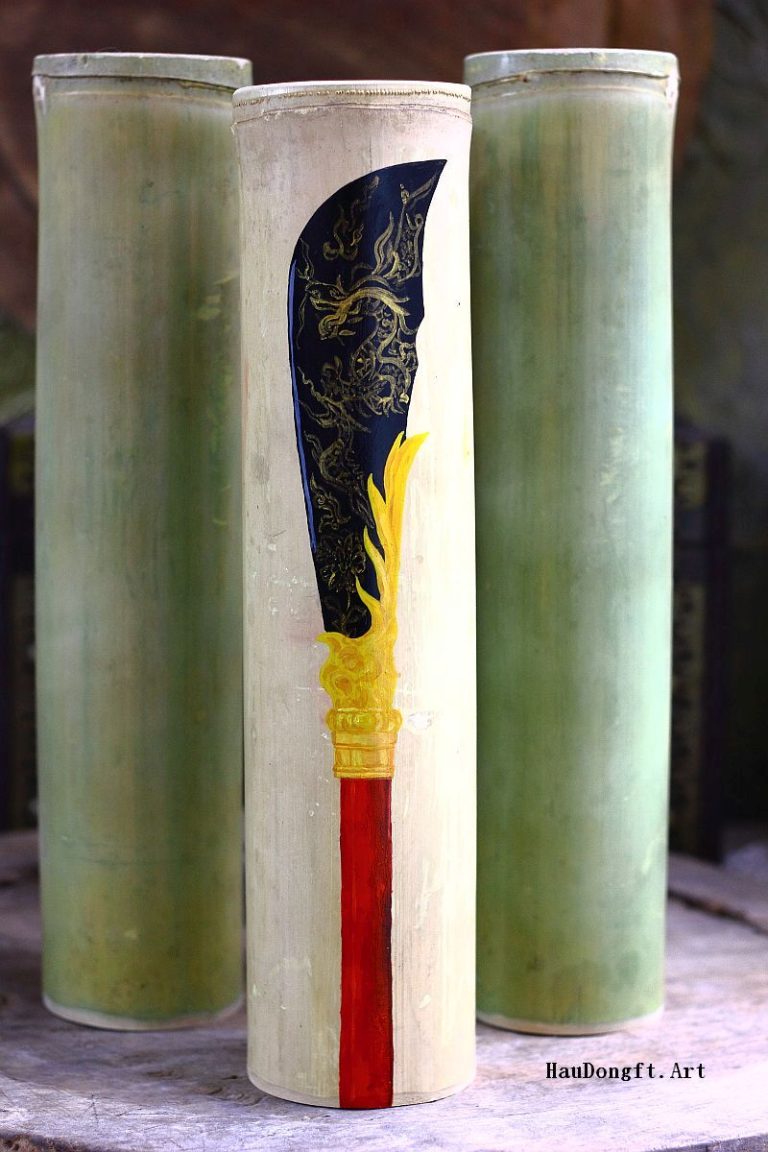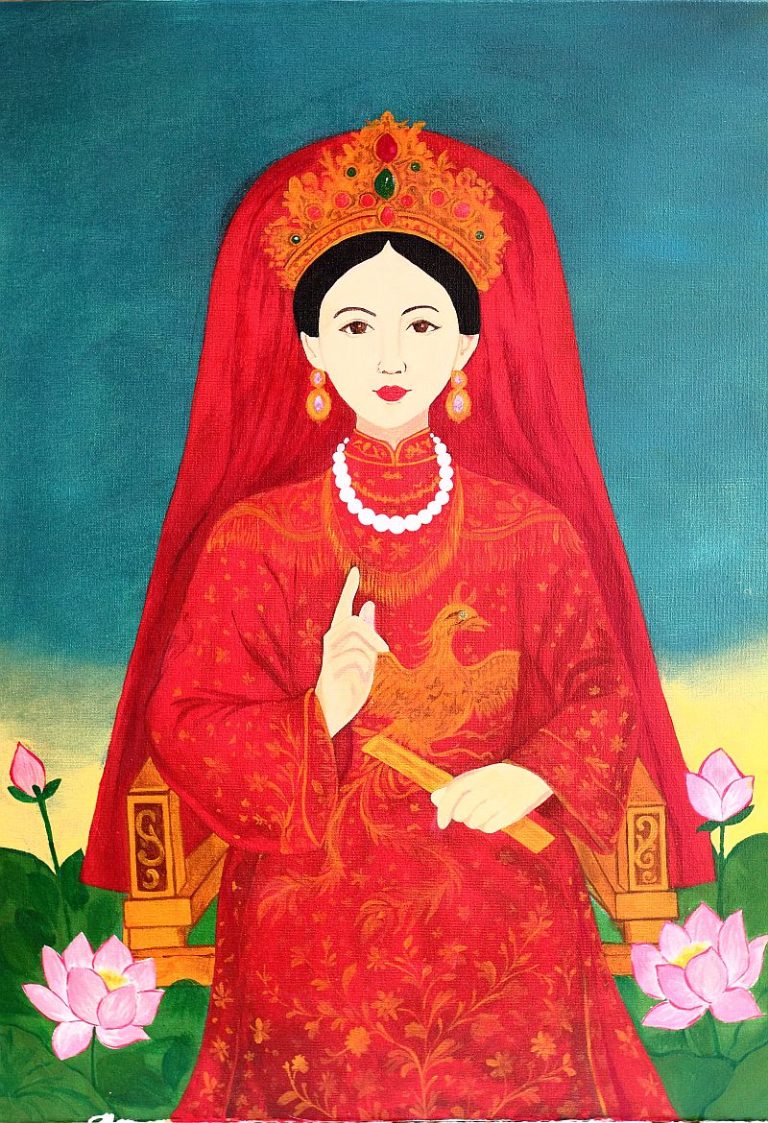Spiritual mediumship (hầu đồng)—also known as lên đồng or hầu bóng—is a distinctive ritual of the Mother Goddess Worship (Đạo Mẫu) of the Three Palaces (Tam phủ) and Four Palaces (Tứ phủ), an ancient belief system of Vietnam’s agricultural communities.
From the earliest times, the Vietnamese have revered Mother Earth as the source of life, viewed the Moon’s light as the sacred radiance of the divine, and worshiped the Mother as an eternal goddess. For thousands of years, despite the introduction of Buddhism, Confucianism, and Christianity, the Mother Goddess worship has endured, harmonizing with other religions.
In the hầu đồng ritual, the medium (ông đồng or bà đồng) serves as the bridge between the human world and the spiritual realm, allowing devotees to express devotion, pray for blessings, seek guidance, or receive divine messages. The ritual blends hát chầu văn (ritual singing), sacred dance, and resplendent costumes; each trance (giá hầu) reenacts the virtues and deeds of a deity within the system of the Three/Four Palaces, or figures such as Đức Ông, Ông Hoàng, Thánh Cô, Thánh Cậu, and others. Thus, the ritual is at once a spiritual connection and a form of folk performance art.
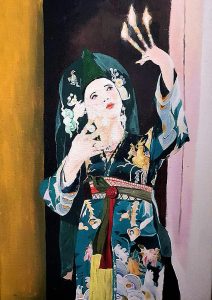
A medium performs as the 2nd Princess of the Mountains and Forests, painted by me
❓ Is hầu đồng superstition?
The essence of hầu đồng is not superstition. It is a form of folk belief, reflecting spiritual needs and faith in the supernatural. Superstition arises when the belief is distorted or exploited for profit—such as staging costly rituals worth tens or hundreds of millions of đồng with promises of “divine blessings of wealth” or “changing one’s fate.”
The true meaning of hầu đồng lies in its spiritual values: seeking good fortune, expressing gratitude, strengthening faith, and fostering community bonds. There is no cultural or scientific basis to claim that material blessings (lộc) are proportional to the amount of money spent on a ritual.
🌸 Preserving and promoting the value of hầu đồng
Hầu đồng is part of Vietnam’s intangible cultural heritage and was inscribed by UNESCO in 2016 as an Intangible Cultural Heritage of Humanity. Preserving this ritual requires:
✔️Understanding its essence and meaning correctly.
✔️Eliminating distortions and commercialization.
✔️Promoting its artistic, educational, and communal values.
When practiced properly, hầu đồng is not only a spiritual ritual but also a thread connecting tradition, belief, and the folk arts of the Vietnamese people.
